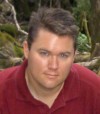2000-2005: NASA-Hydrological Sciences Branch, Branch Head (GS15)
Hydrological Sciences Branch, Goddard Space Flight Center, Greenbelt, Maryland
In this position, I was responsible for supervising, planning, performing, and directing hydrological processes research. Major emphasis is given to the improved understanding and use of remote sensing techniques for obtaining information on the hydrological processes and parameters such as evapotranspiration modeling, soil moisture, and snowpack properties. In addition, methods for estimating evapotranspiration and precipitation are investigated. The ultimate objective of these activities is the application and demonstration of the utility of remote sensing measurements for improved understanding of hydrological processes.
Additional responsibilities of this position include: (1) Coordinate, supervise, plan, perform, and direct relevant research on hydrological processes and remote sensing as part of the NASA’s Earth Science Enterprise research program. (2) Identify problems and requirements for observations of the elements of the hydrological cycle and methods to best achieve a spacecraft system for observing these processes. (3) Direct technical efforts of the program of the Hydrological Sciences Branch for all measurements of phenomena from aircraft and satellites, and take responsibility for the physical basis of these experiments. (4) Develop and execute experiments with microwave radiometers, active microwave systems, and other radiation detection systems for possible use on meteorological and Earth resources satellites. (5) Assist in the development of sensors that may be flown on the NASA aircraft and future spacecraft such as the shuttle or shuttle-launched payloads. (6) Coordinate and assign other specialists or technicians necessary for the effective performance of hydrologic investigations and studies. (7) Advise NASA Headquarters and program offices through membership on working groups and committees in the planning of new programs associated with future spacecraft missions and make presentations on scientific rationale for such missions.(8) Serve as an authority and consultant to the Laboratory, GSFC, and NASA related to monitoring of hydrological phenomena. (9) Assign work to employees supervised on the basis of their individual backgrounds, skills, and capabilities to perform given assignments. (10) Further Equal Opportunity goals by exercising leadership in and responsibility for equal opportunity in employment, development, advancement, and treatment of employees directly and indirectly supervised. (11) Ensure the safety of personnel and property by identifying and controlling hazards within the scope of authority.
